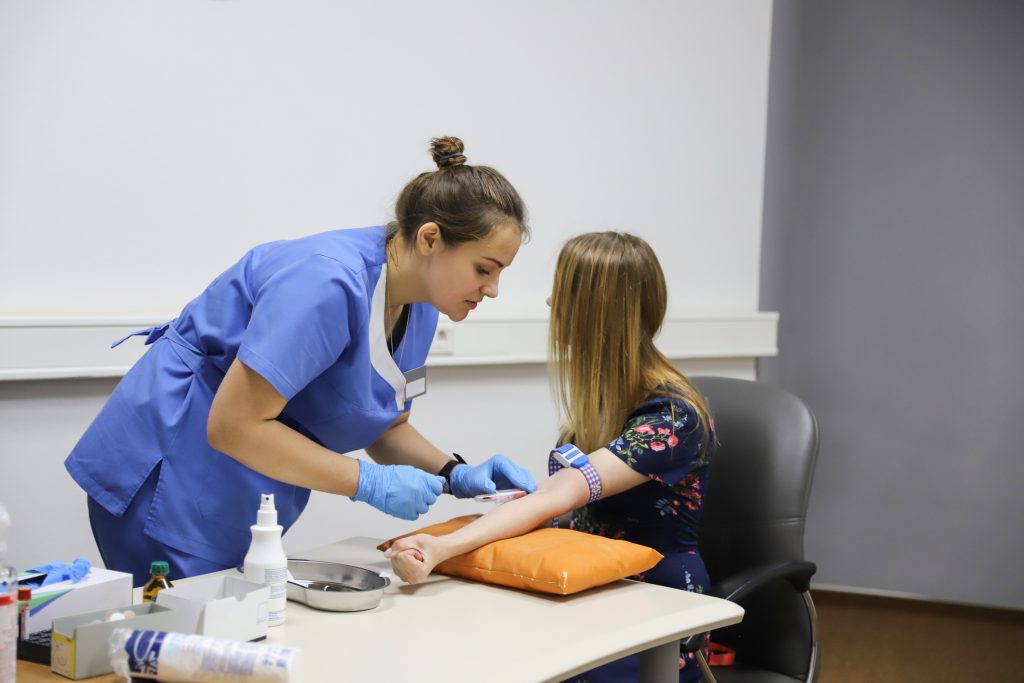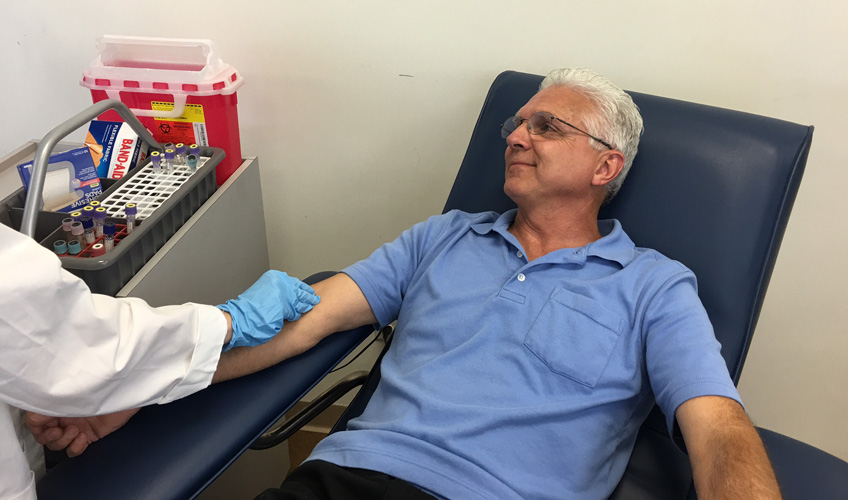7 Simple Techniques For Northeast Medical Institute - New Haven Campus Phlebotomy Course & Cna Class
7 Simple Techniques For Northeast Medical Institute - New Haven Campus Phlebotomy Course & Cna Class
Blog Article
Northeast Medical Institute - New Haven Campus Phlebotomy Course & Cna Class - The Facts
Table of ContentsSee This Report on Northeast Medical Institute - New Haven Campus Phlebotomy Course & Cna ClassThe Definitive Guide to Northeast Medical Institute - New Haven Campus Phlebotomy Course & Cna ClassRumored Buzz on Northeast Medical Institute - New Haven Campus Phlebotomy Course & Cna Class8 Easy Facts About Northeast Medical Institute - New Haven Campus Phlebotomy Course & Cna Class ShownThe Ultimate Guide To Northeast Medical Institute - New Haven Campus Phlebotomy Course & Cna ClassThe Only Guide to Northeast Medical Institute - New Haven Campus Phlebotomy Course & Cna Class
However, using such gadgets ought to be gone along with by other infection avoidance and control methods, and training in their use. Not all safety and security devices are suitable to phlebotomy. Before picking a safety-engineered gadget, individuals need to completely check out offered devices to determine their proper use, compatibility with existing phlebotomy techniques, and effectiveness in protecting staff and patients (12, 33).For setups with low sources, price is a motoring factor in procurement of safety-engineered tools - Phlebotomy Classes. Where safety-engineered tools are not readily available, proficient use a needle and syringe serves. Unintended direct exposure and certain details about a case ought to be videotaped in a register. Assistance solutions ought to be promoted for those who undertake unintended direct exposure.
In the blood-sampling room for an outpatient department or center, give a comfortable reclining couch with an arm rest.
How Northeast Medical Institute - New Haven Campus Phlebotomy Course & Cna Class can Save You Time, Stress, and Money.
Guarantee that the indications for blood tasting are clearly specified, either in a composed method or in recorded directions (e.g. in a lab form). In all times, comply with the techniques for infection prevention and control detailed in Table 2.2. Infection prevention and control practices. Gather all the equipment required for the treatment and place it within secure and simple reach on a tray or trolley, making sure that all the items are plainly visible.
Where the patient is grown-up and aware, adhere to the actions outlined listed below. Introduce yourself to the individual, and ask the client to state their complete name. Check that the laboratory form matches the person's identification (i.e. match the individual's information with the research laboratory kind, to make certain precise recognition). Ask whether the patent has allergic reactions, fears or has actually ever collapsed during previous injections or blood draws.
Make the client comfy in a supine setting (if possible). The person has a right to reject an examination at any type of time before the blood sampling, so it is crucial to make sure that the individual has actually recognized the procedure - Phlebotomy Courses.
The 5-Minute Rule for Northeast Medical Institute - New Haven Campus Phlebotomy Course & Cna Class
Expand the client's arm and evaluate the antecubital fossa or lower arm. Situate a vein of a great dimension that is visible, straight and clear.
DO NOT put the needle where capillaries are diverting, due to the fact that this enhances the possibility of a haematoma. The vein should show up without using the tourniquet. Situating the capillary will certainly assist in identifying the correct size of needle. Use the tourniquet concerning 45 finger widths above the venepuncture website and re-examine the capillary.
Specimens from main lines carry a threat of contamination or incorrect laboratory examination results. It is appropriate, yet not ideal, to attract blood samplings when very first introducing an in-dwelling venous tool, before linking the cannula to the intravenous liquids.
Northeast Medical Institute - New Haven Campus Phlebotomy Course & Cna Class Can Be Fun For Anyone
Failure to enable adequate get in touch with time raises the risk of contamination. DO NOT touch the cleaned up website; in particular, DO NOT place a finger over the blood vessel to guide the shaft of the subjected needle.
Ask the individual to develop a fist so the veins are much more famous. Go into the vein quickly at a 30 degree angle or less, and remain to introduce the needle along the vein at the most convenient angle of access - PCT Classes. As soon as sufficient blood has actually been collected, release the tourniquet prior to taking out the needle
The Ultimate Guide To Northeast Medical Institute - New Haven Campus Phlebotomy Course & Cna Class
Take out the needle delicately and apply mild pressure to the site with a tidy gauze or dry cotton-wool sphere. Ask the individual to hold the gauze or cotton wool in area, with the arm prolonged and raised. Ask the client NOT to bend the arm, due to the fact that doing so triggers a haematoma.

8 Easy Facts About Northeast Medical Institute - New Haven Campus Phlebotomy Course & Cna Class Described
Do not press the syringe plunger since added stress boosts the threat of haemolysis. Where possible, keep the tubes in a rack and move the rack in the direction of you. Inject downwards right into the ideal coloured stopper. DO NOT eliminate the stopper due to the fact that it will certainly release the vacuum. If the example tube does not have a rubber stopper, infuse incredibly slowly into television as lessening the stress and speed used to transfer the specimen reduces the risk of haemolysis.

Report this page